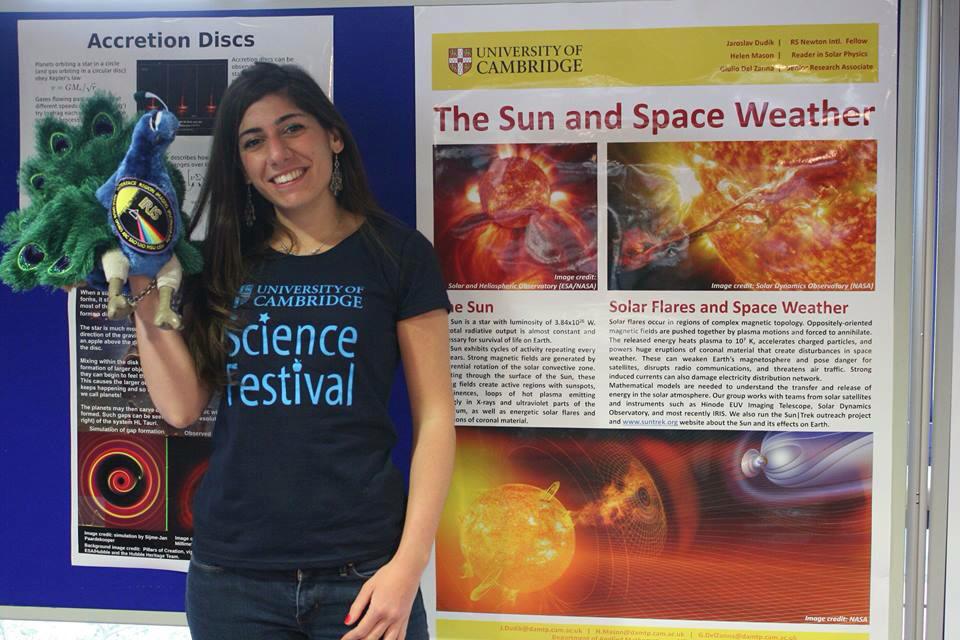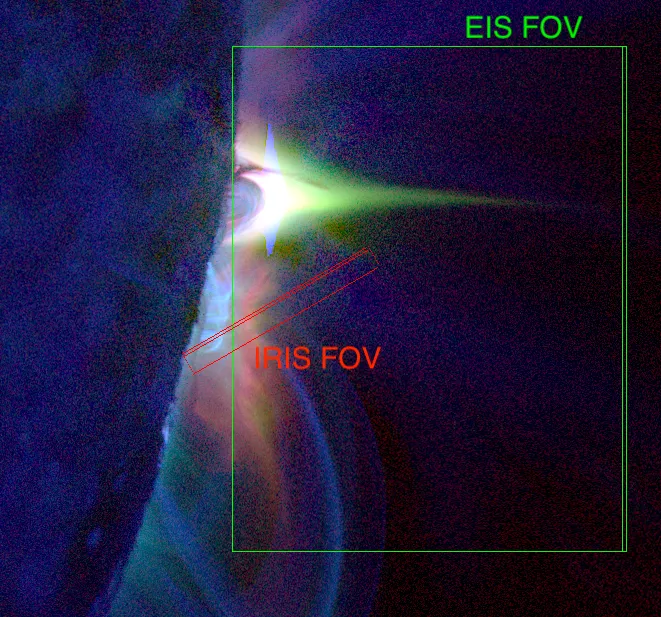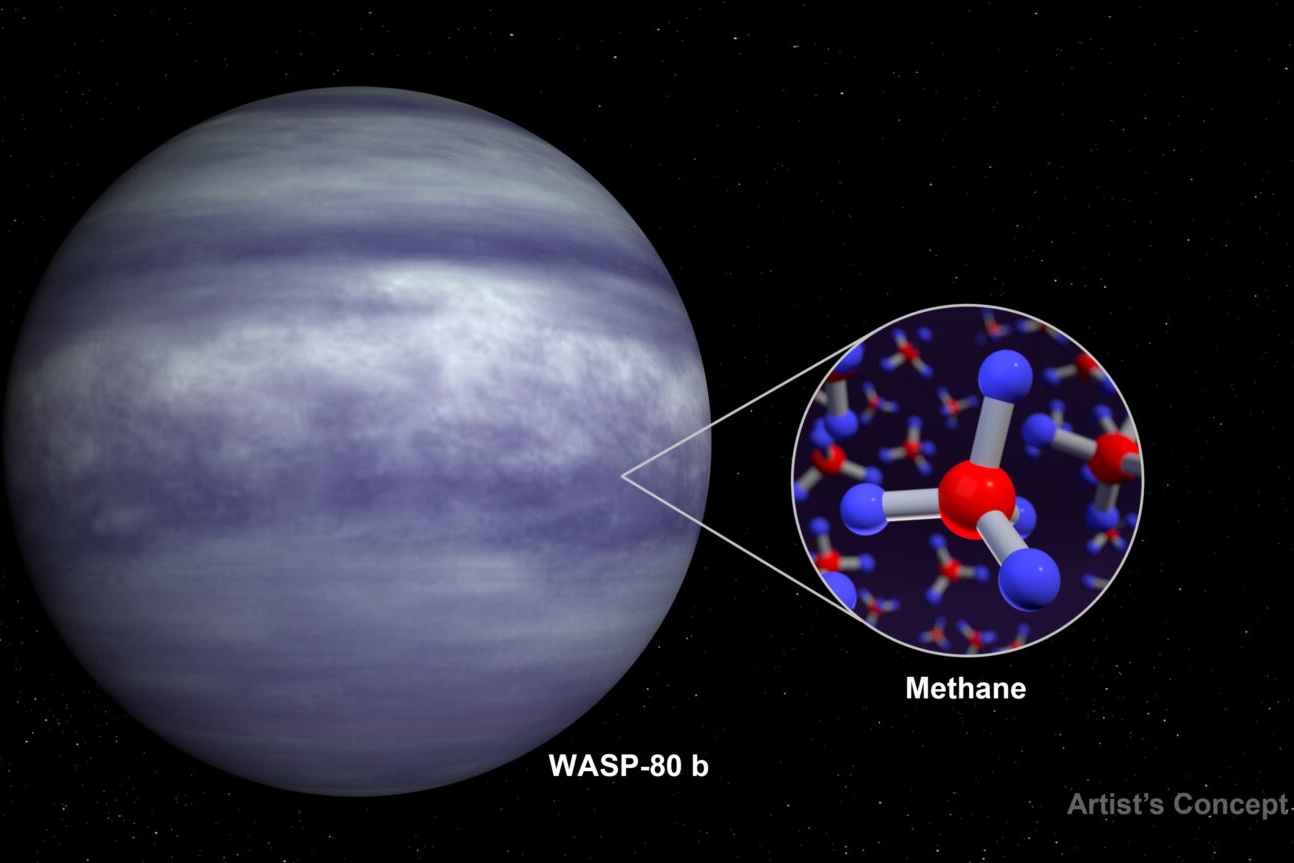BAERI’s Taylor Bell and a team of researchers have identified the presence of methane in the atmosphere…
Solar flares and the mysteries of the Sun — A conversation with Vanessa Polito
Vanessa Polito is a heliophysics researcher with the Bay Area Environmental Research Institute. Originally from Italy, her work focuses on understanding the nature and dynamics of solar flares, the largest explosions in the solar system.
This interview has been edited for length and clarity.
The Bay Area Environmental Research Institute: How would you like to introduce yourself?
Vanessa Polito: I’m Vanessa, I’m a research scientist at BAERI, and I work on the Sun and solar physics. I’m originally from Italy and I’ve been in the US now for six years and have spent most of that time in California, actually.

Vanessa Polito
BAERI: And how do you like to introduce your work?
Vanessa: My work focuses mostly on studying solar flares, on theory aspects, so my work is mostly computational. I analyze a lot of observations from solar satellites using data analysis and computational models.
BAERI: What are the basics that someone would need to understand about how the Sun works before they can understand the specifics of what you do?
Vanessa: I guess the main thing to keep in mind is that the Sun is basically a ball of very high temperature gas. And, especially in the atmosphere of the Sun, the temperature goes very high and the atoms become ionized, which means they get stripped of most of their electrons. The gas is in a state called plasma, which is made of very charged particles. The motions of these particles are mostly determined by the magnetic field of the Sun, and, in turn, the particles influence the motions of the Sun’s magnetic field.
What we think is happening when we have solar flares, or any sort of energetic event on the Sun, is that it is related to the accumulation of energy that is stored in the magnetic field and then is suddenly released very violently. That release causes flares and big eruptions and things like that. That’s the basic idea, though of course there are many things we don’t yet understand in the details.
BAERI: What are some of the things we don’t understand yet?
Vanessa: For flares, we all kind of agree that the energy that drives them is coming from the energy stored in the magnetic field that gets suddenly released. But how exactly this process happens, and why, and the details of the actual physics that’s happening is still debated. We have models and very good guesses for what might be happening, but the details are still missing, and trying to reproduce exactly what we are observing is still challenging.
BAERI: What makes it so hard?
Vanessa: It’s a combination of things, some from the observational side and some from the modeling side. We get a lot of observational information when we look at solar flares with spectrometers, which are instruments that can disperse light according to its wavelength. Unfortunately, most spectrometers have a very limited field of view which means that sometimes we might miss a flare or observe it too late. A lot of the interesting physics might happen in a very specific location and time and it’s hard to have the right instruments observing at the right place and time. There are new instruments coming, so hopefully in the future we’ll have more high resolution observations over a larger portion of the Sun, and that will help
And the models are, of course, models — it’s really hard to reproduce the reality using computer simulations. Even though the models are getting more and more refined and more and more detailed, they still have limitations. The Sun is a very extreme environment. The physics is very hard. It’s nothing like anything we can reproduce on Earth, so it’s hard to figure out what kind of physical processes might be happening and model them.
BAERI: How much of the Sun can be observed at one time?
Vanessa: It depends on the instrument. Usually you have a compromise between the resolution and the area you are covering. You might have instruments that cover a bigger part of the Sun but at a lower resolution, or you can observe a very fine structure but not a wide area of them.
BAERI: How long does a solar flare last? And how big are they?
Vanessa: It depends on the event. Some small flares can be minutes, but others can last for several hours. That’s kind of the range. It’s an enormous amount of energy, something like 10 million times the energy released during a volcanic explosion. It’s very big and it can significantly affect our space environment.
There was a case in the eighties where there was a big power grid failure in all of Quebec caused by a big solar flare. Now that our society relies on electronics and communication and GPS and all of that, there’s been a lot of effort to try to understand how flares are produced and how we can predict space weather, because they can be very disruptive to the power grid and our communication and basically all of our society as we know it.

A large flare observed by SDO/AIA, IRIS and Hinode/EIS
BAERI: How far are we from being able to predict them?
Vanessa: Right now the best we can do is say something like ‘Yes, there is a high probability that there will be a big flare in the next few hours. Or maybe tomorrow.’ But we can’t predict if there’s going to be a flare next week. We’re still not there yet. Satellites first started looking at the Sun in the fifties, so at the end of the day it hasn’t been that long. We’ve learned so much, and our capability for prediction is going to increase.
BAERI: Once there’s a solar flare happening, how long does it take that energy to reach Earth?
Vanessa: The radiation can be just minutes, but the plasma… not all flares release a significant amount of plasma into the heliosphere, but for the ones that do, it can be a couple of days. That’s how we can know when there’s a high probability of seeing an aurora, for example, the northern lights, because if there is a big flare, a couple of days later you can expect to see some northern lights, which is the nice aspect of space weather. Solar activity doesn’t only do bad things, it’s also a beautiful phenomena that can be observed.
BAERI: Have you seen them?
Vanessa: I have not. I would really love to see the northern lights at some point.
BAERI: I want to shift gears and talk more specifically about what you’re working to understand. Can you talk a bit about that?
Vanessa: Sure. There is a big community studying solar flares and everyone focuses on different things. The thing I’ve mostly focused on is what we call the impulsive phase of the flare, which is right after the pre-flare phase. It’s when there is the first sudden and impulsive release of energy — when we think that all the action is happening. What I do is compare spectroscopic observations of the flare in the lower atmosphere with the predictions of models.
What I mean by lower atmosphere is… we didn’t talk about this yet, but the solar atmosphere is made up of several layers. As you go toward the outward layers the temperature increases and the density decreases. So the lower atmosphere is denser and cooler than the higher atmosphere. And a lot of the energy penetrates deeper in this lower atmosphere. We have very good data of flares during the impulsive phase with the IRIS satellite. We can see what’s happening in the plasma. There is an energy release that reaches the low atmosphere and the plasma will have a response that is manifested in the form of very large flows, so it’s moving outward, and increasing in temperature and density very quickly. And what we do is to take this information from the observations and compare it with what hydrodynamic models predict.
As I mentioned before, we don’t know a lot about the details of how this energy release happens. But we know some possible mechanisms, and different mechanisms will have different signatures. So we try to combine the models and the observations to see if we can distinguish between competing physical mechanisms, if that makes sense.
BAERI: How did you get started on this particular niche question and in this field in general? How did you get here?
Vanessa: I actually started working on something very different from what I do now. I was working on instruments for space satellites, doing calibration of spectrometers and optics, more engineering and technical work. And then as part of my project there I started working on an instrument for the Solar Orbiter, which is a big solar satellite from the European Space Agency. While working on it, I started reading more about solar physics. And I really liked it. I decided I was actually more interested in the science and theory part than the application. So I switched fields a little bit.
The group I was working with during my Ph.D. were experts in flares and in spectroscopy in the ultraviolet. IRIS was launched the same year I started my Ph.D., so there was a lot of excitement about looking at this new data. I started working with the researchers who then became my post-doc supervisors, and through them I started focusing more on flares. And since then I’ve continued because I really like flares.
BAERI: Is there anything you wish more people understood about your field?
Vanessa: I think many people don’t expect the Sun to be mysterious and that there are a lot of things we don’t understand about it. And we can understand other stars by studying the Sun, because this is the only star we can actually observe very closely. So it’s kind of a laboratory for both plasma physics and stellar physics. People forget that the Sun is a star sometimes. I remember when I was in Cambridge during my PhD, we had a college quiz competition. And one of the questions was: What’s the closest star to us? And people replied ‘Proxima Centauri!’ I think it’s funny people forget that the Sun is a star.


